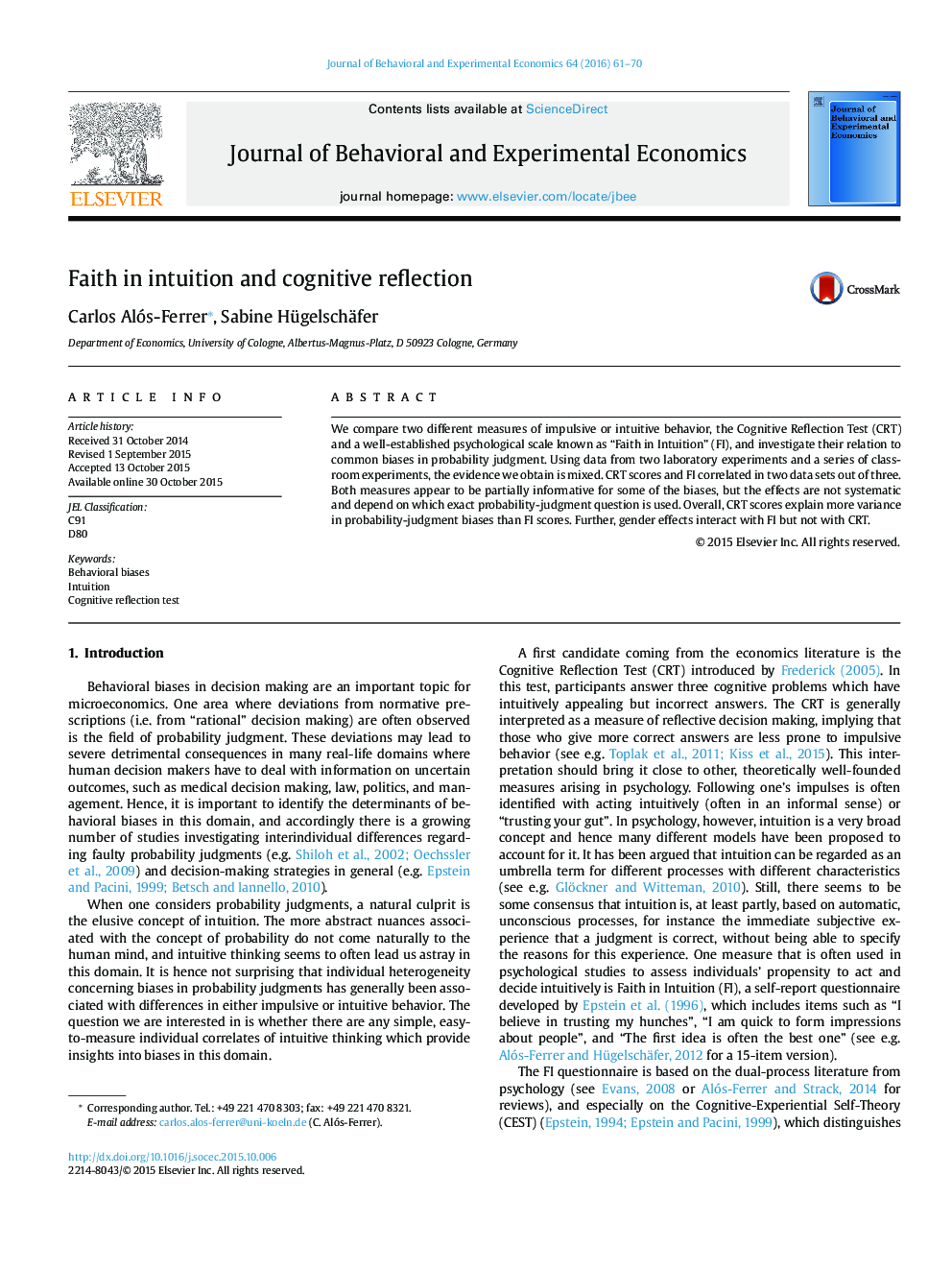| Article ID | Journal | Published Year | Pages | File Type |
|---|---|---|---|---|
| 5034184 | Journal of Behavioral and Experimental Economics | 2016 | 10 Pages |
â¢We compare the Cognitive Reflection Test and the Faith in Intuition scale.â¢We conducted two laboratory experiments and collected classroom data.â¢CRT is especially informative for the conjunction fallacy and conservatism.â¢Results for base-rate neglect and other biases are mixed.â¢FI shows less consistent associations with the biases, and interacts with gender.
We compare two different measures of impulsive or intuitive behavior, the Cognitive Reflection Test (CRT) and a well-established psychological scale known as “Faith in Intuition” (FI), and investigate their relation to common biases in probability judgment. Using data from two laboratory experiments and a series of classroom experiments, the evidence we obtain is mixed. CRT scores and FI correlated in two data sets out of three. Both measures appear to be partially informative for some of the biases, but the effects are not systematic and depend on which exact probability-judgment question is used. Overall, CRT scores explain more variance in probability-judgment biases than FI scores. Further, gender effects interact with FI but not with CRT.
